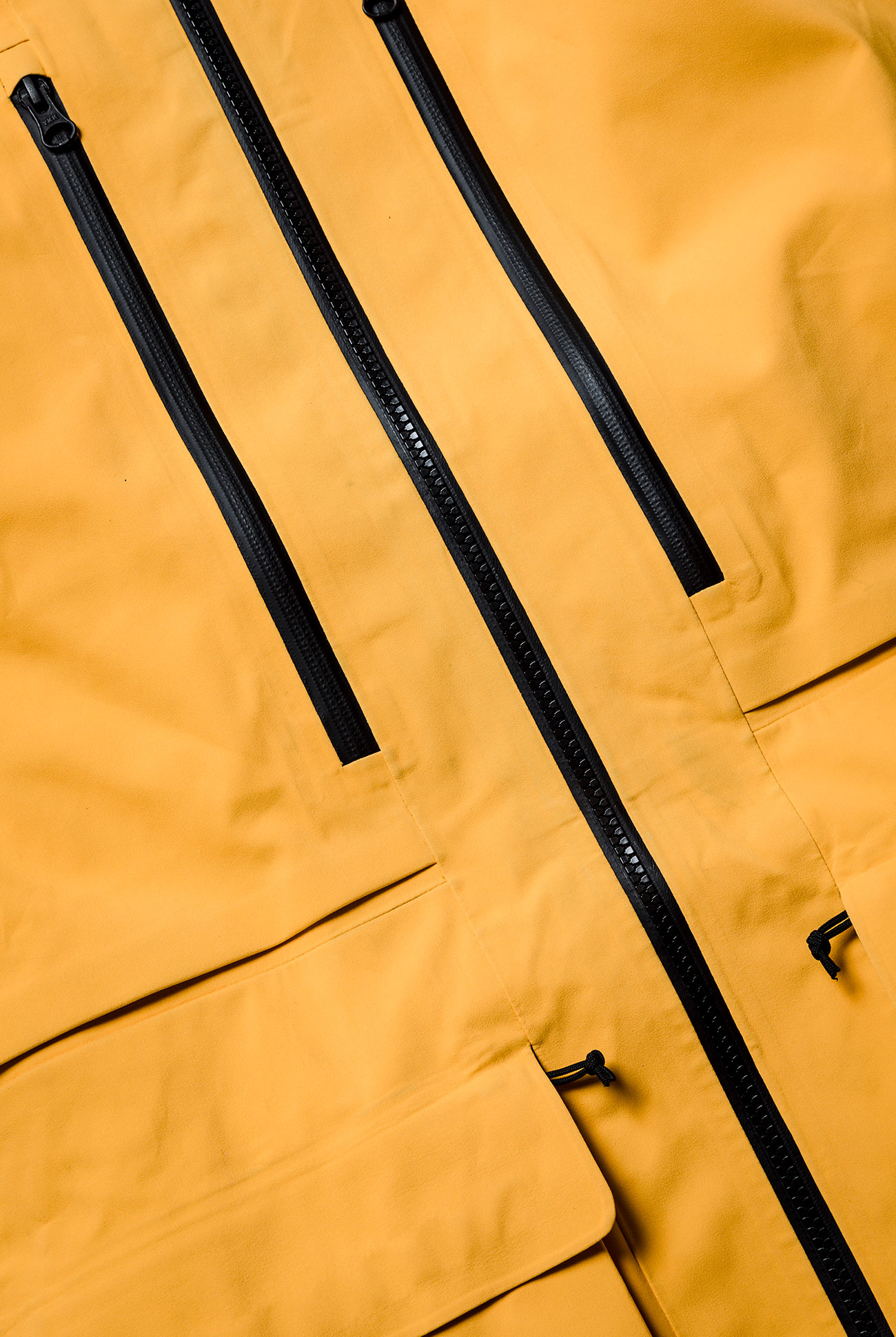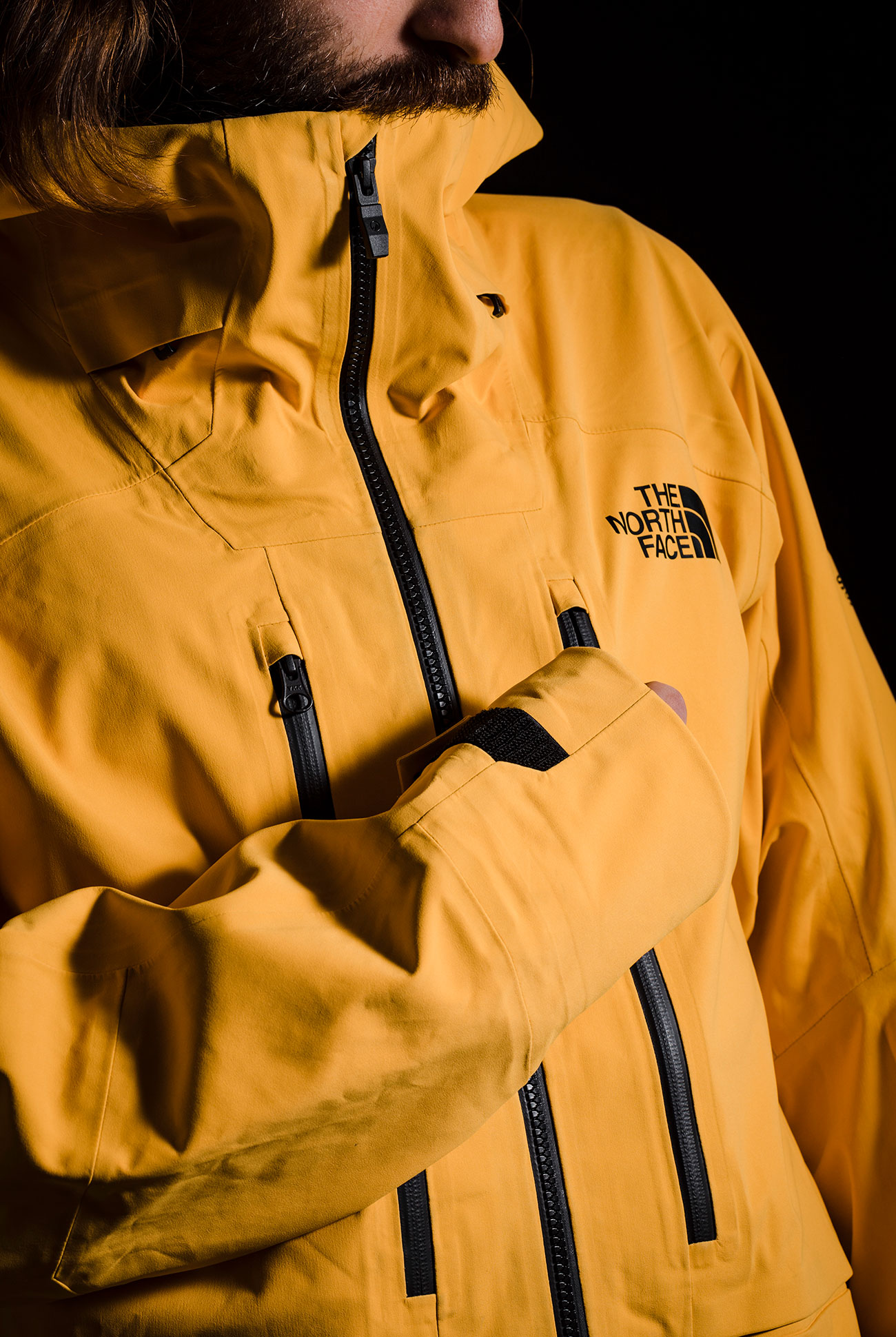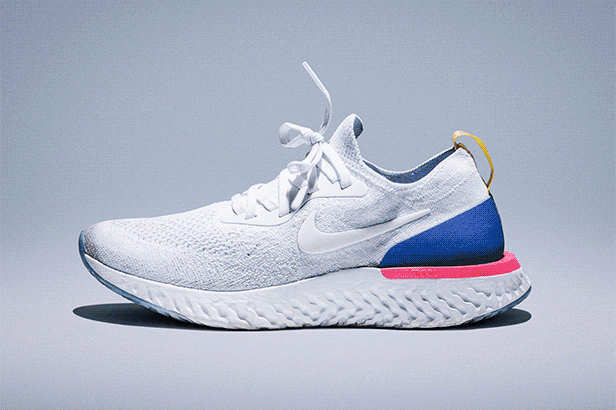Ahh, Aspen. A little place that might be the ideal humble mountain town if it wasn’t for glitzy movie star sightings (we spotted Gwyneth Paltrow on our trip), the lore of Hunter S. Thompson’s 1970 campaign for sheriff, and a tiny on-mountain restaurant called Cloud Nine that sells more Veuve Clicquot than any other establishment in the country during its short four-month season. I recently traveled to the mountain enclave, not for the glam, but to test The North Face’s new fabric, Futurelight, which the company will debut in its 2019/2020 winter outerwear.
Colorado is significant in the Futurelight story; roughly 100 miles southwest of Aspen’s Main Street (as the raven flies) is the summit of Mt. Sneffels, a photogenic pyramid of 14,158 feet. That’s where Andres Marin, a professional climber on The North Face’s team, turned to Scott Mellin, the company’s Global General Manager of Mountain Sports, and said something like, “Wouldn’t it be great if we didn’t have to change our layers constantly?”
Any number of climbers, mountaineers, skiers, snowboarders and hikers have thought the same thought. But, unlike the rest of us who shrug it off, Marin and Mellin found themselves in a position to do something about it. Roughly two years later, they, and all of the engineers, designers, professional athletes and the rest at The North Face, have a solution: a new fabric technology called Futurelight.
Since its initial announcement in January, not much has been revealed beyond the bottom line: Futurelight is entirely waterproof and wildly breathable, meaning athletes won’t overheat wearing it. The instinct is to compare it to Gore-Tex, which is the household name in the waterproof/breathable space (although other brands exist, too, like Dermizax and Polartec). Unlike existing technologies though, Futurelight is created using a process called nanospinning, a technique already used in tech and medical fields that arranges and layers nano-sized fibers in a complex network with plenty of gaps for air but not water. Laminated to fabric, this membrane exhibits all of the waterproof properties you need and expect in the mountains but, according to The North Face, provides magnitudes more breathability.
The recent Aspen junket was the first interaction that anyone not associated with The North Face has had with Futurelight. It began as many of these events do: food, libations and a presentation. Mellin, who’s shaping up to be a spokesperson for Futurelight, analogized the outdoor industry to a group playing with Mr. Potato Head dolls — every brand gets the same set of materials with which to make different products. It’s true to an extent — the same synthetic insulation inside Patagonia’s popular Nano Puff jacket is also inside L.L.Bean’s and others; hundreds of items use Gore-Tex’s waterproof membranes — but companies big enough to house research and development teams to make proprietary fabrics, like The North Face, do exist. What sets Futurelight apart is its ability to customize the fabric’s breathability based on its end-use — ski jackets will have a different airflow than, say, tents.

I spent the following two days wearing the new material in the mountains surrounding Aspen’s various ski resorts. On the first day, our group, which included David Lama and Christina Lustenberger, professional athletes on The North Face’s team, and was led by Scott Eden, a guide for Aspen Expeditions, took advantage of the lifts at Snowmass to gain elevation quickly. Then we dipped off the backside of the Cirque on skis, making our first turns into West Willow Basin down a pitch called Vertigo. Our first hike for more side country terrain came afterward; roughly 1,000 feet up to the 13,100 summit of Mt. Baldy. It wasn’t a lengthy or overly rigorous ascent, but enough, especially with temperatures in the mid-forties, to get a sense of Futurelight’s breathability.
The following day was more ambitious: starting from a pull-off not far from town, we meandered through the trees up a creek and then zippered up a buttress until we made the ridge, and then traversed it to the summit of Ski Hayden Peak at 13,316 feet. We ascended roughly 4,300 feet total over many miles of walking.
The temperatures were again in the mid-forties but even had they been less this was not a journey that I would typically make wearing a shell jacket. One thing I know about myself is that I run hot (Vermonter, here), and I’d rather start a ski tour cold, in nothing but a baselayer and a light fleece, wait for my body to warm up as it works, and finish cold in a summit breeze than sweat the entire way up. I’ve attempted shorter climbs in colder conditions wearing a shell — one of my favorites is Trew’s Powfunk Jacket, which uses a Dermizax NX membrane with a 40,000-millimeter breathability rating (Gore-Tex Pro is rated at 25,000 millimeters) — and I always end up sweating.
I did sweat wearing my Futurelight-equipped jacket, but not nearly as much as I would’ve expected to in a jacket of similar weight — I was wholly impressed by the material. While some of my teammates wore ascent-oriented jackets from the Summit Series, I donned the A-Cad Jacket and bib, which The North Face designed primarily for downhill, in-bounds skiing with heavier fabric (the Futurelight Summit L5 LT Jacket weighs 23 ounces, the Futurelight A-Cad weighs 33). Typically, I would never consider wearing a jacket this heavy for a climb, and with the weather as it was that day, any outer layer was unnecessary until the final wind-exposed ridge. But gear testing obligations prevailed, and I remained wrapped in 100 percent recycled polyester. While my back dampened some through the exertion, I remained comfortable throughout. In any similar jacket, I would’ve been inappropriately dressed for our goal and likely would’ve expended more energy and arrived at the top drenched and dehydrated. The stuff worked.
The next morning, I woke up in the 5 AM darkness of my hotel room to do my usual routine of stretches and body weight exercises. But, each rep cranked up a pain dial inside my skull until I was forced to quit, left immobilized by a throbbing altitude headache. I was ready to call it a trip.
Forty-five minutes later, when I explained my state to Eden and Lama, they advised that I eat, drink and reassess our plan with the group. “Sometimes headaches are part of climbing,” Lama said to me over coffee and toast. Of course, a pro athlete would respond this way (and my headache did subside). But what he meant was that alpine climbing, on skis or foot, is an exercise in suffering. Like running a marathon or riding 100 miles on a bicycle, to set out on these ventures is to sideline physical ease to accomplish a clearly defined goal. Some discomfort is unavoidable (like sore legs, or my throbbing cranium), but some isn’t. We can be warm in sub-zero temperatures and stay dry in the wettest environments. That’s why we have all of the specialized clothing and equipment to facilitate these maniacal activities; that’s why The North Face made Futurelight.

The Good: Compared to similar jackets that we’ve tested in like conditions, Futurelight is significantly more breathable. What’s more, it achieves that invisibly; the jackets and pants that currently feature the technology still look like regular jackets. They feel better too: the material has the feel of softshell and doesn’t make any of the swishy or potato-chip-bag sounds that ultra-technical fabrics typically do.
Who It’s For: Skiers, snowboarders and alpine climbers at first — The North Face is baking Futurelight into these outerwear categories for Fall 2019. The following spring, everyone from runners to hikers will find it in items like wind and rain jackets, and by Fall 2020 anything The North Face makes that’s waterproof will be Futurelight. (This could mean big sustainability ups for The North Face. Mellins say, “Futurelight fabric innovations allow us to create the most sustainable three-layer jacket we’ve ever produced.”)
Watch Out For: You’ll have to get used to wearing a lighter jacket than you typically might — Futurelight’s technical performance is so great that you get the same level of protection as comparable jackets with less material. This is not a bad thing, but takes a mental adjustment. Some of the other early testers I spoke to noted that it felt more air permeable in the wind (it didn’t for me); you may need to rethink your regular layering system.
Note: The North Face has yet to release scientific studies that demonstrate Futurelight’s performance in a lab, but it plans to do so before the September 2 release date. The study will be conducted by a third-party institution called Underwriters Laboratories.
Alternatives: The most similar technology to Futurelight is Polartec’s NeoShell, a softshell that favors breathability while keeping waterproof. You can find it in Backcountry’s recent Touring Collection.
Verdict: It’d be easy to sum up Futurelight by saying that it’s just like your typical waterproof/breathable shell, but better! In a way, that’s true, except “better” isn’t the right word. Because while Futurelight’s performance in ski jackets and bibs is undebatable, its implications could go far beyond helping regulate body moisture. Because a company as big as The North Face is behind it, Futurelight will contend with the main players that have defined the space for years and, as a result, could propel others to compete and thrust us onto a new level of technical outerwear performance, industry-wide.
What Others Are Saying:
• “FUTURELIGHT fabric delivered a very breathable shell that works well for backcountry skiing. (I tested the men’s Summit L5 LT jacket.) It’s comfortable, blocks wind and precipitation, and allows moisture to escape as well as anything on the market. But it falls just short of “holy grail” status, as the jacket does trap some moisture when you redline and sweat.” — Stephen Regenold, Gear Junkie
Key Specs: The North Face Futurelight A-Cad Jacket
Price: $599
Material: 100% recycled polyseter with brushed tricot backer and DWR finish
Weight: 32.8 ounces
The North Face provided us with products for review.

Hot takes and in-depth reviews on noteworthy, relevant and interesting products. Read the Story




